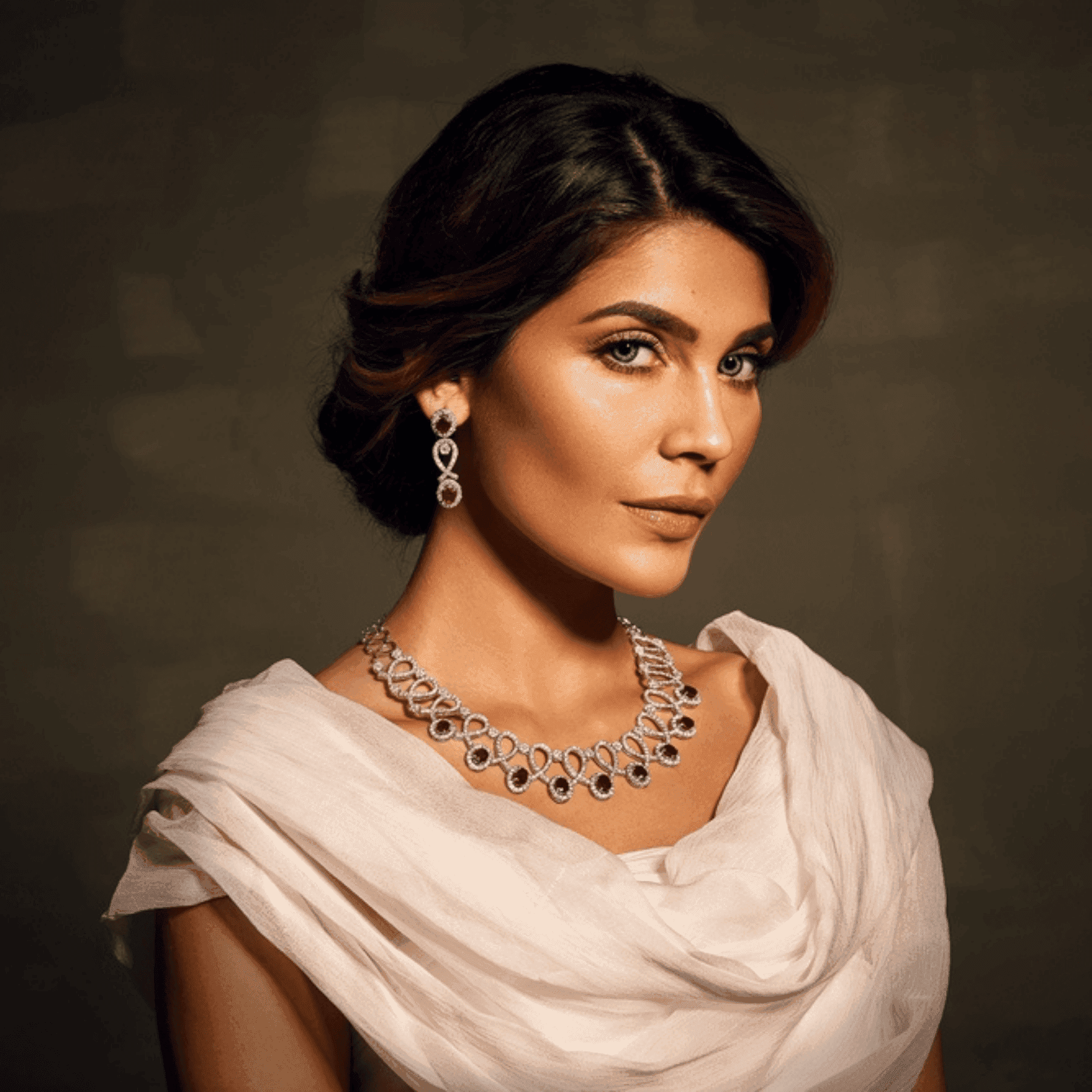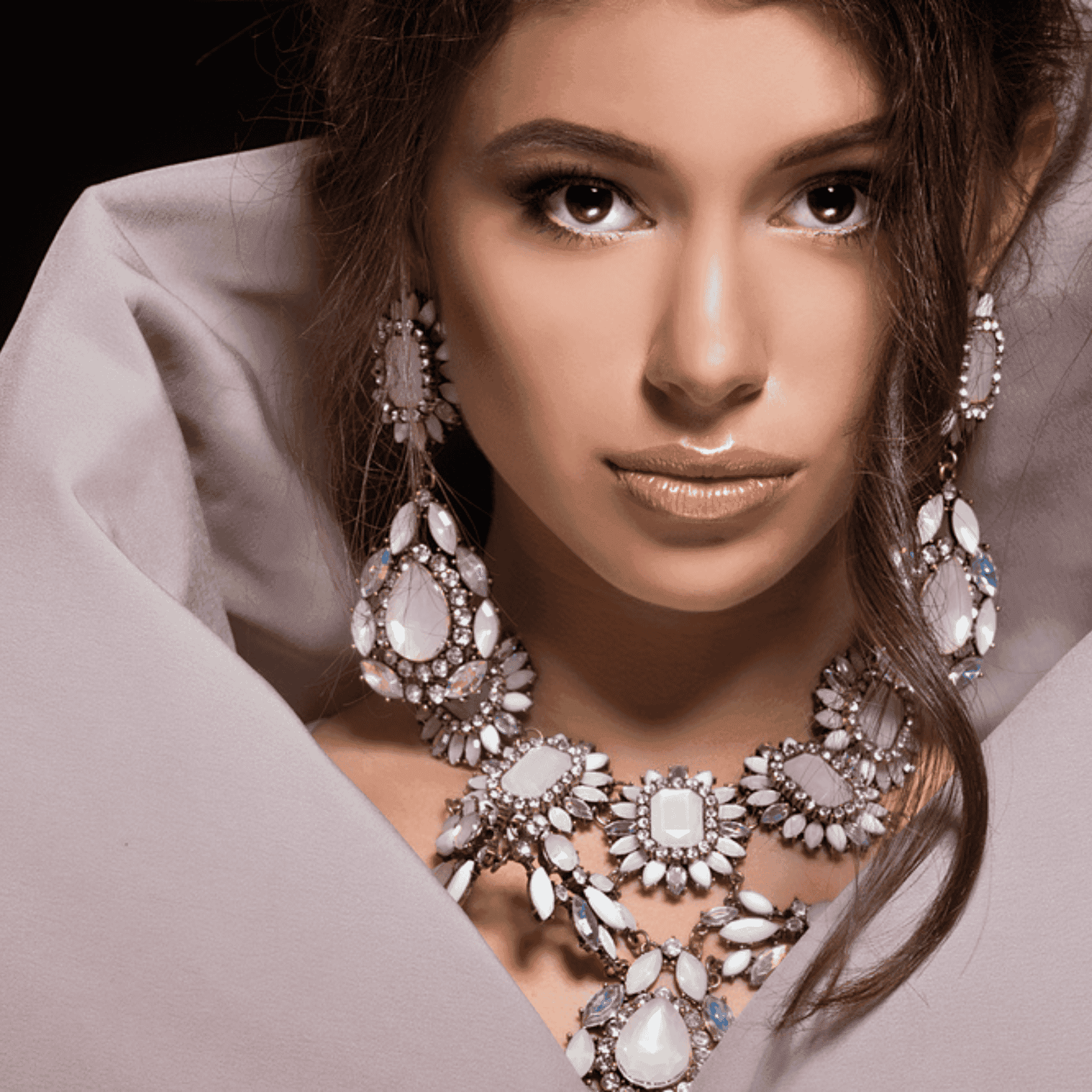
Luxury Edit
•05 min read

Gold jewelry has long been synonymous with luxury, elegance, and the art of self-expression. When choosing the perfect gold for your fine pieces, the decision often narrows to the difference between 14k and 18k gold. This guide will help you understand their composition, appearance, durability, and cost, so you can confidently decide based on your lifestyle, style preferences, and budget.
Gold karats indicate the level of purity in a piece of jewelry. They measure the percentage of pure gold mixed with other metals to enhance durability and alter color. In this section, we explore the gold karat differences between 14k and 18k gold, offering clear insights for a well-informed choice.
14k gold contains 58.3% pure gold and 41.7% alloy metals such as copper, silver, or zinc. This blend not only provides a subtle, lighter hue but also makes 14k gold remarkably durable. Its robustness means it stands up well to daily wear, offering a practical yet stylish option for jewelry that accompanies you on every adventure. This versatile metal is worth considering when you want a balance between luxury and lasting performance.
18k gold, on the other hand, is composed of 75% pure gold and 25% alloy metals. The higher gold purity lends it a richer, more vibrant color. However, this elevated gold content makes it a bit softer and more prone to scratches, which is why it is often chosen for statement pieces and jewelry reserved for special occasions. Understanding these gold purity levels is essential when comparing the 14k vs 18k gold scenario for your collection.
Expert Tip: The higher the karat, the softer the gold. If daily durability is important, 14k gold may be your best bet.
The aesthetic appeal of gold jewelry is crucial, setting the tone for self-expression and style. Both 14k and 18k gold offer distinct visual characteristics that can elevate your collection. Whether you prefer a subtle shine for everyday wear or a richer, more opulent glow for special events, understanding these differences helps in gold karat selection tips.
With a slightly lighter hue, 14k gold presents a unique charm. Its lower gold content gives it a versatile tone available in yellow, white, or rose gold variations. This means that whether you're dressing up for work or a casual outing, 14k gold offers an adaptable look that seamlessly integrates with various styles.
18k gold stands out with its deep, rich color. Perfect for luxury jewelry, its premium feel enhances intricate designs and displays gemstones beautifully. The vibrant shine of 18k gold often becomes the focal point of fine jewelry pieces, making it a favored choice when a luxurious appeal is paramount.
Insight Corner: Did You Know? The color difference between 14k and 18k gold may appear subtle, but it becomes more pronounced under natural light. For those looking to make a bold, opulent statement, 18k gold is often the preferred option.

When selecting luxury jewelry, durability plays a significant role, especially if you intend to wear your pieces daily. Both gold types have unique properties that cater to different lifestyles. Understanding which option suits your day-to-day activities remains key in a comprehensive 14k vs 18k gold comparison.
The alloy composition of 14k gold offers higher resistance to scratches, bending, and general wear and tear. This durability makes it an excellent choice for engagement rings, wedding bands, and other pieces that withstand constant use. For those with an active lifestyle or who desire jewelry that endures regular handling, 14k gold pros and cons must be weighed with a lens on longevity and comfort.
While 18k gold still offers considerable durability, its higher gold content means it is slightly softer than 14k gold. This quality makes it ideal for those exquisite pieces that you plan on wearing during specific events or when you want your jewelry to serve as a luxurious adornment. Thus, when choosing between 14k and 18k gold, consider how often the jewelry will be worn and the kind of care it may require.
Expert Tip: If your lifestyle involves regular, active wear, 14k gold may serve you better. Save 18k gold for jewelry that deserves a special place in your collection.
Price often plays an influential role when choosing luxury gold jewelry. Evaluating the cost against benefits is a part of understanding gold karat differences and the value each provides. Here, we delve into how 14k gold pros and cons compare to the more expensive yet prestigious 18k gold advantages.
Generally, 14k gold is more budget-friendly due to its lower percentage of pure gold. It offers great value for money, especially when durability and everyday wear are top priorities. The price factor, paired with performance, often makes 14k gold a popular choice among those seeking reliable, stylish options without overextending their budget.
While 18k gold comes with a higher price tag, its luxurious appearance and richer color justify the cost for many. Considered an heirloom-quality investment, 18k gold is preferred by those who are ready to invest a bit more for pieces that radiate sophistication and elegance. This aspect makes it a central part of any luxury gold jewelry guide for buyers seeking lasting impact.
Insight Corner: Did You Know? Price differences between 14k and 18k gold can vary widely based on market trends and craftsmanship. Balancing your budget with your long-term jewelry goals is critical when making the right choice.
Making an informed decision requires a thoughtful look at several key aspects. From everyday practicality to a refined, high-end look, aligning your needs with the characteristics of each gold type ensures your jewelry truly reflects your style and personality. Here we offer gold karat selection tips that resonate with both functional use and aesthetic appeal.
-8704a161-e35d-4932-b982-017add6889b1.png&w=3840&q=75)
If you lead an active life and require pieces that can handle everyday wear, 14k gold is often ideal. Its strength and scratch-resistant nature make it perfect for rings, bracelets, and other frequently used accessories. Alternatively, if you are seeking jewelry for special occasions or statement pieces, then the superior luster of 18k gold might be more appealing despite its slightly softer nature.
Style is a personal journey, and the visual appeal of your jewelry should mirror your aesthetic identity. For those who prefer versatility that accompanies a myriad of outfit choices, 14k gold offers adaptability. In contrast, the rich, vibrant tone of 18k gold is best for creating a distinct impression, making it a favorite for high-end designs and pieces that celebrate luxury.
While budget constraints can steer you towards 14k gold, its durability ensures it remains a valuable part of your collection over time. On the other hand, 18k gold, with its inherent rarity and opulence, is revered as an investment piece that holds its value in the luxury market. Deciding on the right option involves balancing both immediate affordability and long-term investment appeal.
The choice depends on personal priorities. 14K gold offers added durability and affordability, making it a practical choice for daily use, while 18K gold provides a more luxurious appearance with higher purity.
Yes, 14K gold is a great option for those seeking jewelry that can withstand everyday wear without sacrificing style.
Absolutely. Its superior alloy mix makes it resilient and perfect for daily use.
14K gold is real gold, comprising 58.3% pure gold combined with other metals to enhance its durability.
Choosing between 14k and 18k gold for luxury jewelry ultimately comes down to balancing durability, appearance, and budget. While 14k gold is ideal for everyday wear due to its strength and affordability, 18k gold offers a luxurious statement with its rich, vibrant hue. By understanding the gold karat differences, reflecting on your lifestyle, and prioritizing your aesthetic preferences, you can select the perfect gold that mirrors your identity and elevates your jewelry collection. Embrace the journey of style with confidence and enjoy the timeless allure of beautifully curated gold jewelry.